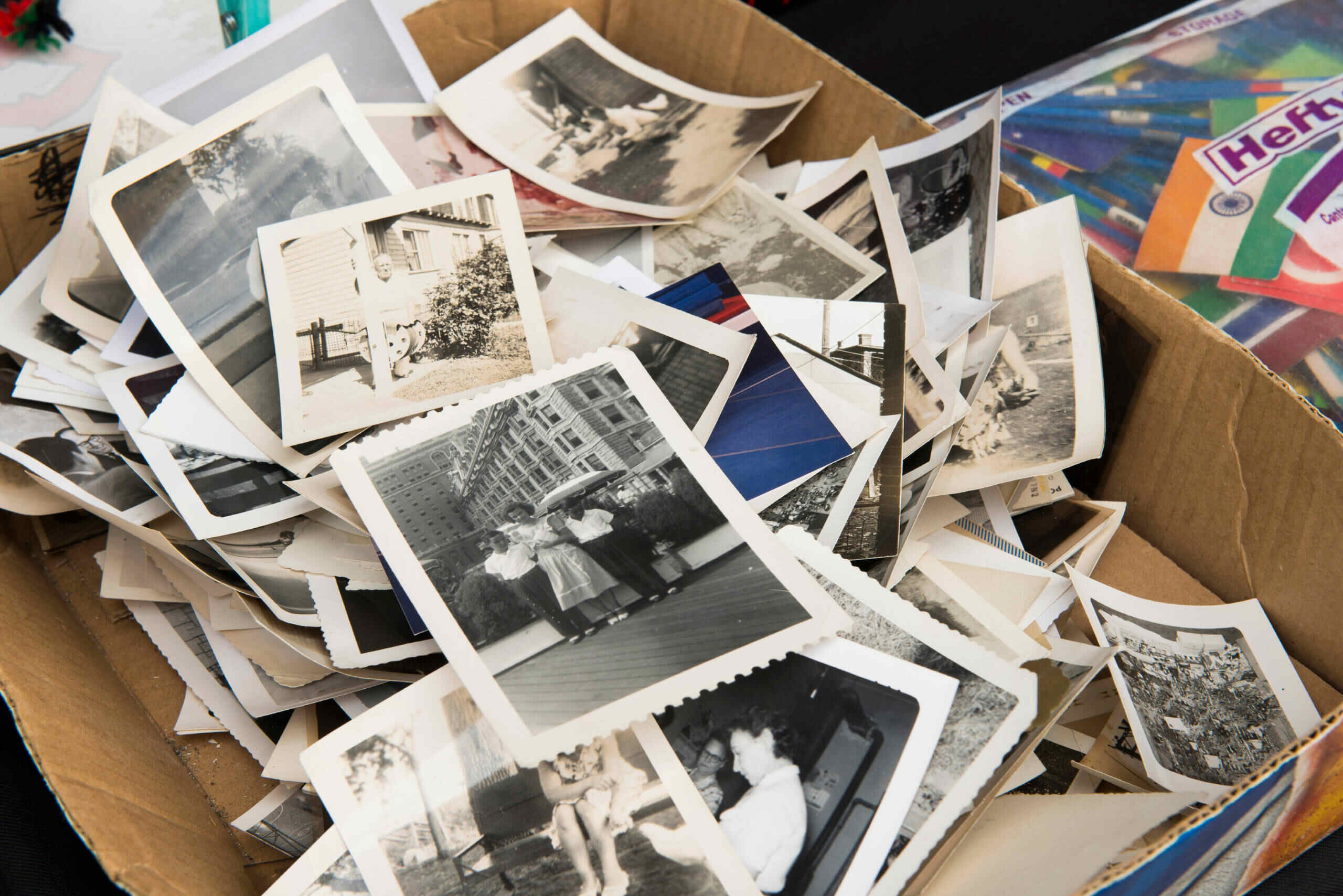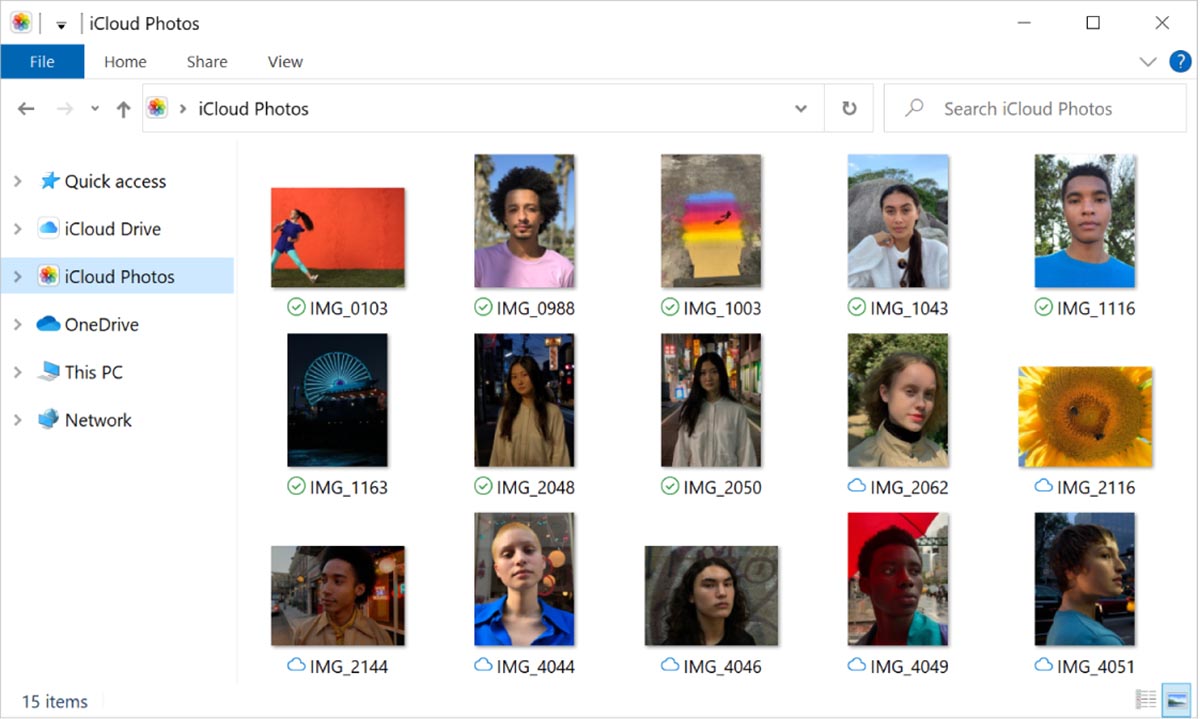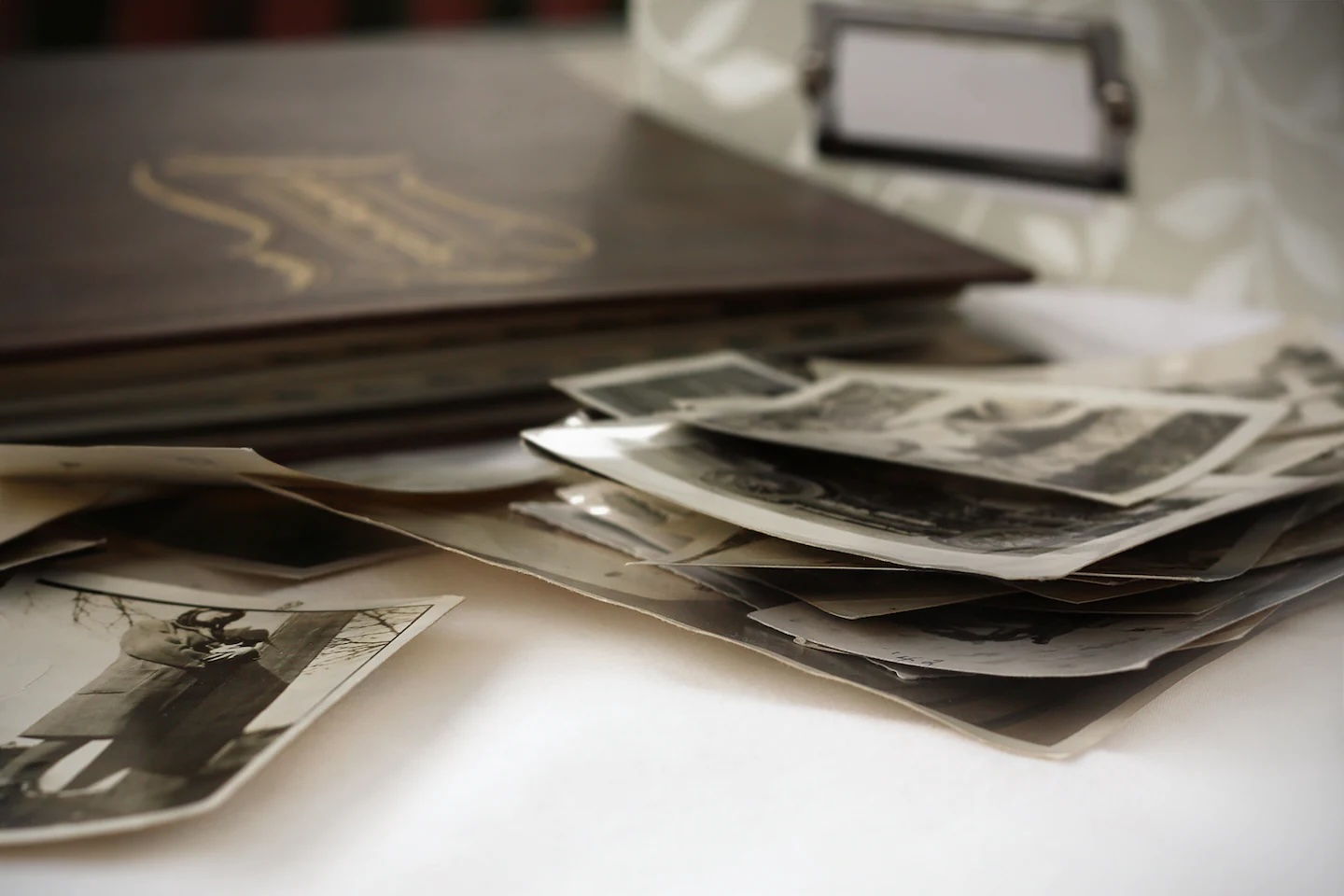

Articles
How To Store Old Photos
Modified: January 6, 2024
Learn the best techniques and tips for storing old photos in this comprehensive collection of articles. Preserve your memories for generations to come.
(Many of the links in this article redirect to a specific reviewed product. Your purchase of these products through affiliate links helps to generate commission for Storables.com, at no extra cost. Learn more)
Introduction
Preserving old photos is not only a way to maintain cherished memories, but it’s also a way to preserve a piece of history. Old photos have a certain charm and nostalgia that can transport us back in time. However, over the years, these precious photos can deteriorate if not stored properly. That’s why it’s crucial to learn how to store old photos to ensure they remain intact for future generations.
Whether you’ve inherited a box of family photos or you’re looking to protect your own collection, this article will guide you through the process of properly storing old photos. We’ll discuss the importance of preserving these memories, how to prepare for photo storage, choosing the right storage materials, and specific methods for storing printed photos, negatives, slides, and digital photos. Additionally, we’ll provide tips on how to maintain and preserve these photos over time.
By following these guidelines, you can ensure that your old photos stay safe, protected, and easily accessible for years to come. So, let’s begin with understanding the importance of properly storing old photos.
Key Takeaways:
- Preserve cherished memories and historical value by properly storing old photos. Organize, digitize, and use acid-free materials to ensure longevity and protect against deterioration.
- Safeguard old photos from damage and deterioration by handling with care, avoiding damaging environments, and regularly updating digital backups. Maintain and preserve these treasures for future generations to enjoy.
Read more: How To Store Old Family Photos
Importance of Properly Storing Old Photos
Old photos hold immense sentimental and historical value. They capture precious moments, document family history, and provide a glimpse into the past. Preserving these photos is not only a way to honor our ancestors and loved ones, but it also allows us to pass down these memories to future generations.
Proper storage is essential to protect old photos from environmental factors that can cause damage. Over time, photos can fade, discolor, become brittle, or even develop mold and mildew if not stored correctly. Irreplaceable memories can be lost forever if they are not preserved adequately.
Furthermore, old photos can serve as valuable historical documents. They offer insight into different eras, showcase societal changes, and provide visual evidence of past events and personal experiences. By storing old photos properly, we contribute to the preservation of our collective history.
Another reason to prioritize the proper storage of old photos is the advancement of technology. As we transition into digital photography, physical photos are becoming less common. This makes older printed photos even more special and valuable. Preserving them ensures that future generations can still experience the tangible beauty of physical photographs.
Additionally, old photos have the power to evoke emotions and foster connections between generations. They can spark storytelling sessions, prompt discussions about family heritage, and strengthen family bonds. By properly storing these photos, we can continue to share and cherish these memories with our loved ones.
In summary, properly storing old photos is crucial for several reasons:
- Preserving sentimental and historical value
- Protecting photos from deterioration and damage
- Contributing to the preservation of collective history
- Ensuring future generations can still experience physical photographs
- Fostering emotional connections and familial bonds
Now that we understand the importance of preserving old photos, let’s move on to the next step: preparing for photo storage.
Preparing for Photo Storage
Before you begin the process of storing your old photos, it’s essential to prepare them properly. Preparing your photos for storage will help ensure their longevity and minimize the risk of damage. Here are some steps to follow:
1. Gather and organize: Start by gathering all your old photos in one place. Sort them based on themes or events, such as family vacations, holidays, or special occasions. By organizing them, you’ll have a clearer idea of the quantity and types of storage materials you’ll need.
2. Clean your hands: Before handling your photos, make sure your hands are clean and free of any lotions, oils, or residue that could transfer onto the photos. Consider wearing gloves to avoid direct contact, especially with delicate or fragile prints.
3. Remove any damaging materials: Check your photos for any materials that could cause harm, such as paperclips, rubber bands, or adhesive tape. These items can leave marks, indentations, or even cause the photos to stick together. Gently remove any attachments or debris using a soft brush or cotton swab.
4. Make digital copies: Consider digitizing your old photos as a backup measure. Scanning or photographing your prints allows you to have a digital copy that can be easily replicated and shared with family members. Store these digital copies in multiple locations, such as external hard drives, online cloud services, or secure storage platforms.
5. Scan or photograph negatives and slides: Negatives and slides can deteriorate over time, just like printed photos. To preserve them, use a dedicated negative scanner or a film adapter for a flatbed scanner to create digital copies. Like the printed photos, store these digitized negatives and slides in multiple locations.
6. Backup digital photos: If you have digital photos, make sure to back them up regularly. Use external hard drives, cloud storage services, or other secure backup solutions. Having multiple copies of your digital files reduces the risk of losing them due to technical failures or accidental deletion.
By following these preparation steps, you’ll ensure that your old photos are in the best possible condition for long-term storage. The next step is choosing the right storage materials.
Choosing the Right Storage Materials
When it comes to storing old photos, choosing the right materials is crucial. The right storage materials can provide protection against environmental factors, prevent damage, and prolong the lifespan of your cherished memories. Here are some key considerations when selecting storage materials:
1. Acid-free and archival-quality: Opt for acid-free and archival-quality storage materials. Acidic materials, such as certain papers and plastic sleeves, can cause photos to deteriorate over time. Look for products labeled as “acid-free,” “archival-safe,” or “photo-safe” to ensure long-term preservation.
2. Photo sleeves or envelopes: Store your individual photos in acid-free, clear plastic sleeves or envelopes. These provide a barrier against dust, fingerprints, and moisture, while allowing you to view the photos without damaging them. It’s best to use sleeves or envelopes that are slightly larger than the photos to prevent bending or curling.
3. Storage boxes: Choose proper storage boxes that are large enough to accommodate your photos. Look for boxes made from acid-free or lignin-free materials. Lignin is a substance found in some types of paper that can cause yellowing and deterioration. Ensure the boxes are sturdy and have a tight-fitting lid to protect against light, dust, and pests.
4. Dividers: Use acid-free dividers or index cards to organize and separate different categories or sections within the storage boxes. This will help prevent photos from rubbing against each other and minimize the risk of damage.
5. Archival albums: If you prefer to display your photos in albums, choose archival-quality albums with acid-free pages and photo-safe sleeves. Avoid albums with adhesive pages, as they can cause photos to stick and become damaged over time. Opt for albums that allow for easy insertion and removal of photos.
6. Negative and slide storage: For storing negatives and slides, use archival-quality negative sleeves or slide pages. These are specifically designed to protect these fragile formats from scratching, dust, and deterioration. Store the sleeves or pages in acid-free binders or boxes to ensure further protection.
7. Climate-controlled environment: Store your photos in a cool, dry, and stable environment to avoid humidity, drastic temperature changes, and exposure to direct sunlight. Basements, attics, and areas prone to moisture should be avoided as storage spaces.
By using the right storage materials, you can significantly reduce the risk of damage and deterioration to your old photos. In the next sections, we’ll explore specific methods for storing printed photos, negatives, slides, and digital photos.
Storing Old Printed Photos
Printed photos hold a special place in our hearts, and it’s essential to store them properly to maintain their quality and longevity. Here are some methods for storing old printed photos:
1. Acid-free photo sleeves or envelopes: Place individual photos in acid-free, clear plastic sleeves or envelopes. Make sure the sleeves are slightly larger than the photos to prevent bending or curling. This protection helps safeguard against dust, fingerprints, and moisture. Consider organizing the sleeves within acid-free storage boxes for added protection.
2. Archival-quality photo albums: If you prefer to display your photos in albums, choose albums with acid-free pages and photo-safe sleeves. Look for albums that allow for easy insertion and removal of photos. Avoid albums with adhesive pages, as these can cause photos to stick and become damaged over time.
3. Laying flat in acid-free boxes: For delicate or fragile prints, consider laying them flat in acid-free storage boxes rather than standing them upright. This helps prevent bending, creasing, and curling of the photos. Arrange the photos in an organized manner and separate them with acid-free dividers or index cards.
4. Digitizing printed photos: Consider digitizing your printed photos as a backup measure. Scan or photograph each photo to create digital copies, and store them in multiple locations such as external hard drives, cloud storage services, or secure online platforms. This way, even if the physical copy deteriorates, you’ll still have a digital version of the photo.
5. Avoiding damaging environments: Store your printed photos in a cool, dry, and stable environment away from direct sunlight, drastic temperature changes, and high humidity. Avoid areas prone to moisture, such as basements or attics. Proper storage conditions help prevent fading, discoloration, and degradation of the prints.
By following these methods, you can ensure that your printed photos are well-protected and preserved for the future. Next, let’s explore how to store old negatives and slides.
Store old photos in a cool, dry place away from direct sunlight to prevent fading and deterioration. Use acid-free storage materials to protect the photos from damage.
Read more: How To Store Old Photos In Boxes
Storing Old Negatives and Slides
Negatives and slides are delicate formats that require specific storage methods to maintain their quality and longevity. Here are some tips for storing old negatives and slides:
1. Archival-quality negative sleeves or slide pages: Place individual negatives or slides in archival-quality negative sleeves or slide pages. These protective sleeves or pages are made from archival-safe materials that prevent scratching, dust, and deterioration. They also provide easy access and organization.
2. Acid-free storage binders or boxes: Once your negatives or slides are in protective sleeves or pages, store them in acid-free storage binders or boxes. These containers shield against light, dust, and moisture, which can damage the delicate formats. Make sure the binders or boxes are sturdy and have a tight-fitting lid for added protection.
3. Organizing and indexing: Label and organize your negatives or slides logically, such as by date, event, or subject. This makes it easier to locate specific images when needed. Consider using index sheets or printable labels to create a reference system for easy access.
4. Avoiding direct contact: When handling negatives or slides, it’s crucial to avoid touching the emulsion side (the shiny or glossy side). This helps prevent damage, such as fingerprints or scratches, that can affect the quality of the images. Always hold them by the edges or use cotton gloves for added protection.
5. Storing in a climate-controlled environment: Keep your negatives and slides in a cool, dry, and stable environment to prevent deterioration. Avoid areas prone to temperature and humidity fluctuations, such as basements or attics, as these conditions can accelerate the degradation process.
6. Digitizing negatives and slides: Consider digitizing your negatives and slides to create digital copies. This allows for easy viewing, sharing, and preservation. Use a dedicated negative scanner or a film adapter for a flatbed scanner to capture high-quality digital images. Store the digitized files in multiple locations for added security.
By following these storage methods, you can safeguard your old negatives and slides and ensure their long-term preservation. Next, let’s explore the storage options for old digital photos.
Storing Old Digital Photos
In today’s digital age, many of our precious photos exist in digital formats. To ensure the longevity and accessibility of your old digital photos, it’s important to store them properly. Here’s how you can store your old digital photos:
1. Backup on multiple devices: Store your digital photos on multiple devices to minimize the risk of data loss. Make copies on external hard drives, USB flash drives, or network-attached storage (NAS) devices. Having multiple backups provides redundancy and safeguards against hardware failures.
2. Cloud storage and online backup: Utilize cloud storage services, such as Google Drive, Dropbox, or iCloud, to store your digital photos. These platforms offer secure online storage and automatic backups, ensuring that your photos are protected even in the event of physical device loss or damage.
3. Organize and categorize: Create a systematic folder structure to organize and categorize your digital photos. Use descriptive file names and include relevant metadata, such as dates or locations. This will make it easier to locate specific photos in the future.
4. Renaming and tagging: Consider renaming your digital photo files using a consistent naming convention. Additionally, use tags or keywords to make searching for specific photos faster and more efficient. This organization technique will help you retrieve photos based on specific criteria or events.
5. Digital photo management software: Utilize specialized photo management software, such as Adobe Lightroom, Apple Photos, or Google Photos, to manage and organize your digital photo collection. These tools offer advanced features like facial recognition, automatic tagging, and image editing capabilities.
6. Regularly check and update backups: Ensure that your backup devices and cloud storage services are up to date. Regularly check for any errors or corrupted files and update your backups accordingly. This practice will help prevent data loss and maintain the integrity of your digital photo archive.
7. Print physical copies: Consider printing select digital photos to create physical copies. This not only provides an alternative way of enjoying your photos but also acts as an additional backup in case of digital file loss or technological obsolescence.
By following these storage methods, you can protect your old digital photos from loss, accidental deletion, or technological failures. Remember to regularly review and update your storage systems to ensure the longevity and accessibility of your digital memories.
Now that we’ve covered how to store old printed photos, negatives, slides, and digital photos, let’s move on to the maintenance and preservation of these treasured memories.
Maintaining and Preserving Old Photos
Preserving old photos goes beyond just storing them properly. It also involves taking steps to maintain and protect them from potential deterioration. Here are some tips for maintaining and preserving your old photos:
1. Handle with care: When handling old photos, use clean, dry hands or wear lint-free gloves to prevent oils, dirt, or moisture from transferring onto the photos. Hold them by the edges to avoid leaving fingerprints or causing damage.
2. Avoid direct sunlight: Exposure to direct sunlight can cause photos to fade or discolor over time. Display or store your photos away from windows or areas exposed to intense light. If you choose to display them, consider using UV-protected glass frames or UV-blocking sleeves.
3. Protect from extreme temperatures and humidity: High temperatures and humidity can accelerate the deterioration process of photos. Avoid storing them in places prone to temperature fluctuations or excessive moisture, such as basements or attics. Aim for a cool, dry, and stable environment for long-term preservation.
4. Regularly clean storage containers: Dust and debris can accumulate inside storage boxes or albums over time. Regularly clean containers with a soft brush or a lint-free cloth to remove any dirt or particles that could potentially damage the photos. Ensure the containers are dry before placing the photos back inside.
5. Periodically inspect for damage: Regularly examine your photos for any signs of damage, such as discoloration, fading, or mold growth. If you notice any issues, consult with a professional conservator or photo preservation specialist to determine the best course of action for restoration or treatment.
6. Avoid damaging materials: Store your photos away from materials that could leach chemicals or cause damage, such as rubber bands, paperclips, or adhesive tape. These items can stain or adhere to the photos, leading to permanent damage. If photos are stuck together, seek professional assistance to safely separate them.
7. Update backups for digital copies: If you have digitized your old photos, ensure that your digital backups are regularly updated and stored in multiple locations. Technology can become obsolete, and digital files can still be susceptible to corruption or loss, so maintaining updated backups is crucial for long-term preservation.
By following these maintenance and preservation tips, you can extend the lifespan of your old photos and keep them in excellent condition for future generations to enjoy.
Now that we’ve covered the importance of properly storing and preserving old photos, it’s time to wrap up our article.
Conclusion
Preserving old photos is not just about holding onto cherished memories; it is a way to safeguard our heritage and connect with past generations. Properly storing, maintaining, and preserving old photos is essential to ensure that these precious memories remain intact for years to come.
In this article, we have discussed the importance of properly storing old photos and the steps to prepare them for storage. We have explored the significance of choosing the right storage materials, including acid-free sleeves, archival-quality albums, and climate-controlled storage options.
We have also covered specific methods for storing printed photos, negatives, slides, and digital photos. By using acid-free sleeves, archival-quality binders, and embracing digitization, we can better protect these invaluable treasures.
Maintaining and preserving old photos involves handling them with care, protecting them from direct sunlight and extreme conditions, regular inspection for damage, and ensuring updated backups for digital copies.
By following these guidelines, we can ensure that our old photos remain vibrant, intact, and readily accessible to ourselves and future generations. The memories captured in those photos will continue to inspire and connect us, and the historical value will be preserved for posterity.
So, whether you have a box of family photos or a collection of digital images, take the time to properly store, maintain, and preserve these treasures. They are a tangible link to our past and a testament to the moments that have shaped us.
As time passes, the value of those old photos only grows, making the efforts to protect and preserve them even more important. So, let’s take action now to ensure that our old photos remain a source of joy, inspiration, and connection for generations to come.
Frequently Asked Questions about How To Store Old Photos
Was this page helpful?
At Storables.com, we guarantee accurate and reliable information. Our content, validated by Expert Board Contributors, is crafted following stringent Editorial Policies. We're committed to providing you with well-researched, expert-backed insights for all your informational needs.















0 thoughts on “How To Store Old Photos”